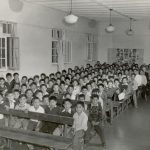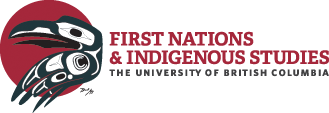Sixties Scoop
…protection was one of these areas.2 In 1951, twenty-nine Aboriginal children were in provincial care in British Columbia; by 1964, that number was 1,466. Aboriginal children, who had comprised only…
The Residential School System
…The Abduction of First Nations Children and the Restoration of Indigenous Communities. Vancouver: Douglas & McIntyre, 1997. Haig-Brown, Celia. Resistance and Renewal: Surviving the Indian Residential School. Vancouver: Arsenal Pulp…
The Residential School System (2009)
…adults, many of them lack adequate parenting skills and, having only experienced abuse, in turn abuse their children and family members. The high incidence of domestic violence among Aboriginal families…
Aboriginal Identity & the Classroom
…status” because one of their parents does not have status. Those with 6(1) – or full – status can pass on their status to their children. Those with 6(2) –…
Indian Status
…their band, and their registration number. “Status Indians” are wards of the Canadian federal government, a paternalistic legal relationship that illustrates the historical imperial notion that Aboriginal peoples are “children”…
Aboriginal Fisheries in British Columbia
…his knowledge of the capacity of the camp, of the number of children that extended families had, of the number of fishing rocks that were accessible according to the varying…
Marginalization of Aboriginal women
…strength and men were respected for their spiritual and physical strength. Women were given the responsibility in bearing children and were given the strength and power to carry that responsibility…
Bill C-31
…and family and community connections. Her children could also be involuntarily enfranchised as a result. Compulsory enfranchisement disproportionately affected Indian women, since Indian men could not have their status forcibly…
Government Policy
…to be kept in a condition of tutelage and treated as wards or children of the State. …the true interests of the aborigines and of the State alike require that…


